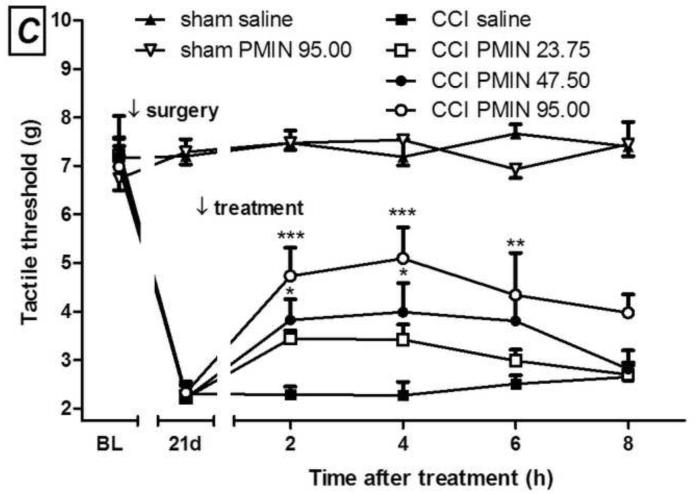Fig. 1.
Development of mechanical allodynia after chronic constriction injury (CCI) in mice (A). I.p. minocycline (B, 100 mg/kg) or 12S-hydroxy-1,12-pyrazolinominocycline (PMIN; C, 23.75, 47.50 or 95.00 mg/kg) inhibits the mechanical allodynia induced by CCI. (A) Main effect of surgery, F(1,30)= 105.95, p < 0.0001; main effect of time, F(3,30) = 11.49, p < 0.0001; interaction, F(3,30) = 12.29, p < 0.0001. (B) Main effect of treatment, F(1,40)= 5.15, p = 0.0467; main effect of time, F(4,40) = 4.56, p = 0.0039; interaction, F(4,40) = 3.74, p = 0.0112. (C) Main effect of treatment, F(3,80)= 5.60, p = 0.0059 ; main effect of time, F(4,80) = 14.90, p < 0.0001 ; interaction, F(12,80) = 2.71, p = 0.0041. Sham animals were unaffected by treatments (all p values higher than 0.05). Data are expressed as mean ± S.E.M. (n = 6). BL = baseline. * p < 0.05, ** p < 0.01 and *** p < 0.001 compared with the vehicle-treated group, tested by two-way ANOVA followed by Bonferroni test, taking time and surgery (A) or time and treatment (B and C) as main factors.



